From Pyramids to ‘Spinning Tops,’ Here’s What Nutrition Guidelines Look Like in 7 Countries Around the World
Welcome to Passport Nutrition. We’re mapping the flavors of the world one country at a time by speaking with people who wrap their careers around cuisine as well as those who simply savor an hour spent in the kitchen after work. You’ll find that a “healthy plate” isn’t one size—or country—fits all.
Ask your social circle for a definition of healthy eating and chances are you'll be met with responses that run the gamut. Meat or no meat, cow's milk or oat milk, carbs or no carbs... The debate over what it actually looks like to eat healthy reaches the same heights of whether Ross and Rachel were really on a break. People get heated.
Imagine taking that conversation global. What does eating healthy look like to people in Japan, India, or Argentina? Well, you're about to find out. Detailed here is how seven different parts of the world—including the United States—define healthy eating, according to the nutritional guidelines from their governments. What do we all have in common? Where do we differ? You're about to get schooled.
How nutritional guidelines compare and contrast across the globe

United States of America
The nutritional guidelines in the United States are determined by the department of Health & Human Services (HHS) and the U.S. Department of Agriculture (USDA) and are reevaluated every five years to take into consideration any new, emerging scientific data. You know that food pyramid we were all taught in elementary school? It's totally outdated—and has been since 2011 when the government introduced a new model they call My Plate.

{{post.sponsorText}}
Set up like a plate, the latest nutritional guidelines emphasize the importance of vegetables, grains, fruits, and protein, and dairy. Below is the breakdown of what they specifically recommend for adult women, per day:
- 2 1/2 cups of vegetables
- 6 ounces of grains
- 1 1/2 to 2 cups of fruit
- 5 to 5 1/2 ounces of protein
- 3 cups of dairy
"The core recommendations for these healthy eating patterns are unchanged from previous editions of the Guidelines, and continue to encourage Americans to consume more healthy foods like vegetables, fruits, whole grains, fat-free and low-fat dairy products, lean meats, seafood, other protein foods, and oils," the HHS's site reads. "They also recommend limiting sodium, saturated and trans fats, and added sugars."
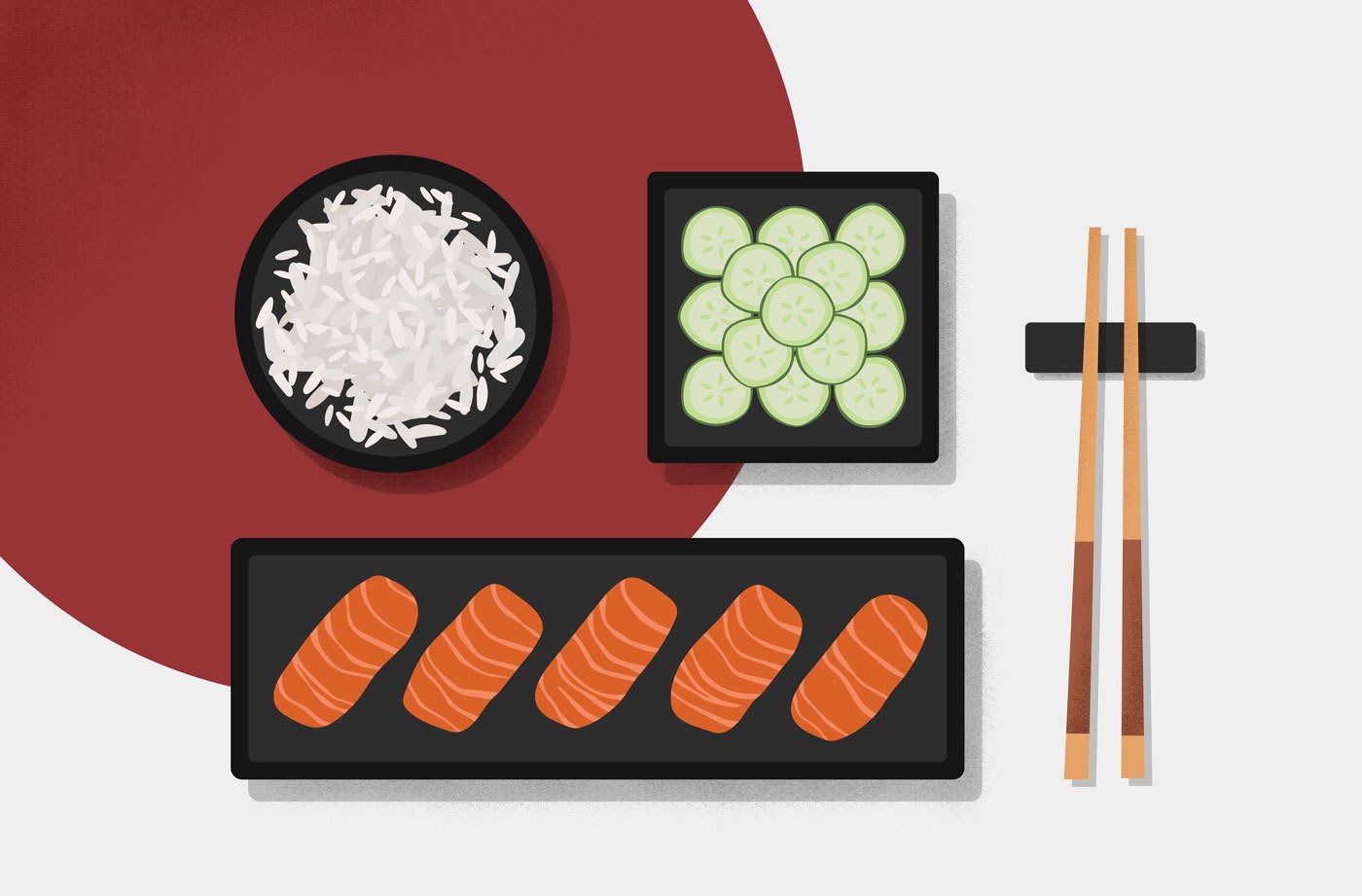
Japan
Over 6,000 miles away in Japan, the country's Ministry of Education, Science and Culture, Ministry of Health and Welfare, Ministry of Agriculture, and Forestry and Fisheries all had input as to what the nutritional guidelines should be, parlaying the information to citizens in the form of a spinning top, which was meant to look like a popular traditional Japanese toy. At the top of the, er, top are grain-based dishes such as rice, bread, noodles, and pasta. This is followed by vegetable-based dishes, then fish, eggs, and meat dishes. Milk and fruit are at the bottom.
The "spinning" nature represents the importance of physical activity and regular movement. The nutritional guidelines also emphasize the importance of staying hydrated with water and tea. Below is a breakdown of the recommended food groups, per daily serving:
- 5 to 7 servings of grains
- 5 to 6 servings of vegetables
- 3 to 5 servings of fish, eggs, and meat
- 2 servings of fruit
- 2 servings of milk
The spinning top is reminiscent of the Food Pyramid of yore. If your best life includes a diet heavy on carbs, you may find yourself really thriving in Japan, where rice is served at virtually every meal.
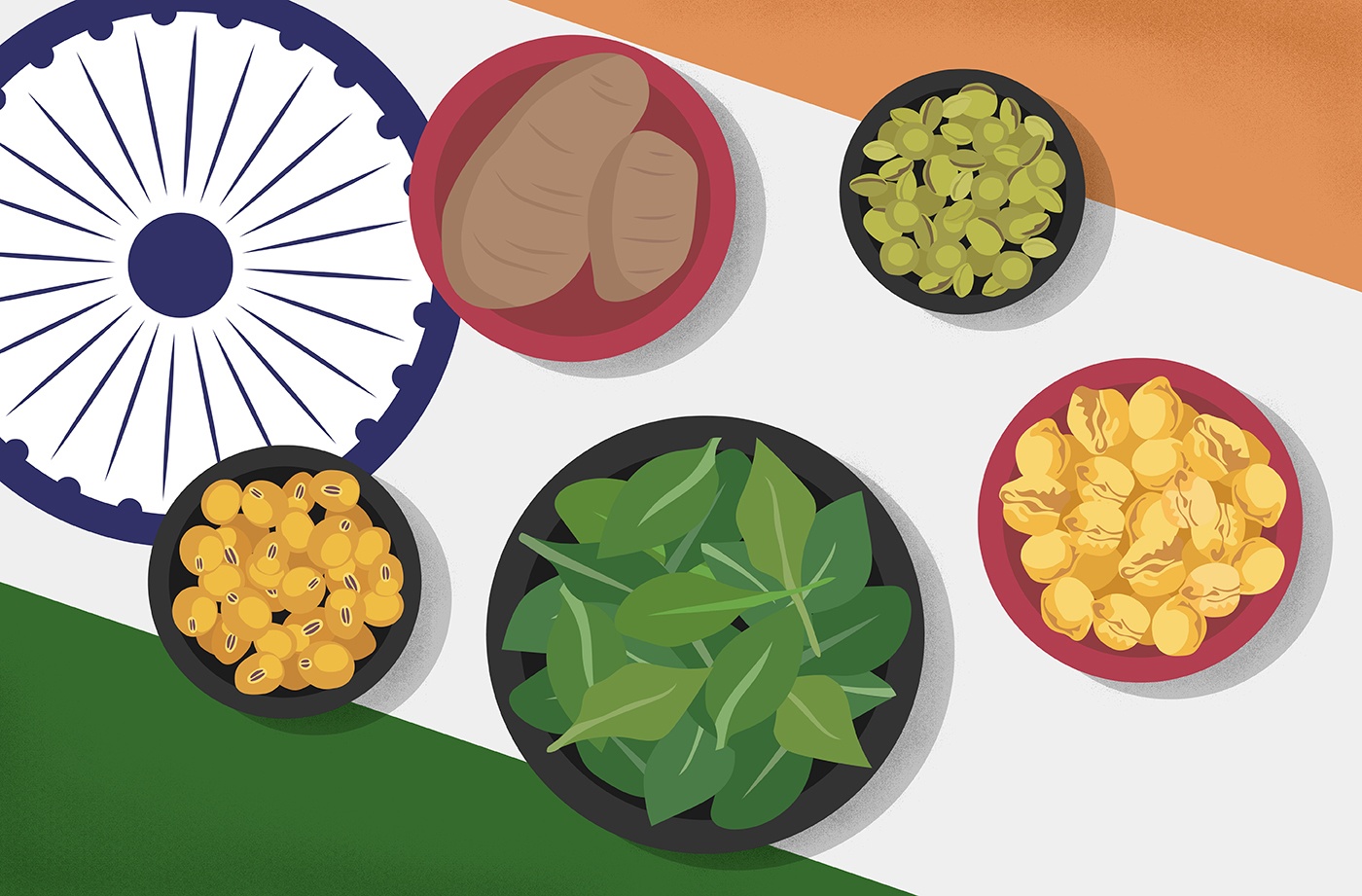
India
India's nutritional guidelines come via a food pyramid created by the National Institute of Nutrition. "A balanced diet is one which provides all the nutrients in required amounts and proper proportions. It can easily be achieved through a blend of the four basic food groups," the dietary guidelines handbook for India reads.
Those food groups are reflected in their food pyramid. At the bottom are cereals, grains, legumes, and beans, which citizens are recommended to "consume adequately." The second base of the pyramid consists of fruit and veggies, which should be eaten "sufficiently." Meat and oils are recommended to be consumed only moderately, and processed foods or anything high in sugar and fat should be eaten sparingly. The guidelines also call out alcohol and tobacco from being healthy at all, and also encourage exercise and physical activity. Below is a more comprehensive breakdown:
- 50 to 60 percent of calories from carbohydrates, preferably complex carbs
- 20 to 30 percent of calories from fats
- 10 to 15 percent of calories from protein
"In addition, a balanced diet should provide other non-nutrients such as dietary fiber, antioxidants, and phytochemicals which bestow positive health benefits," the handbook says.
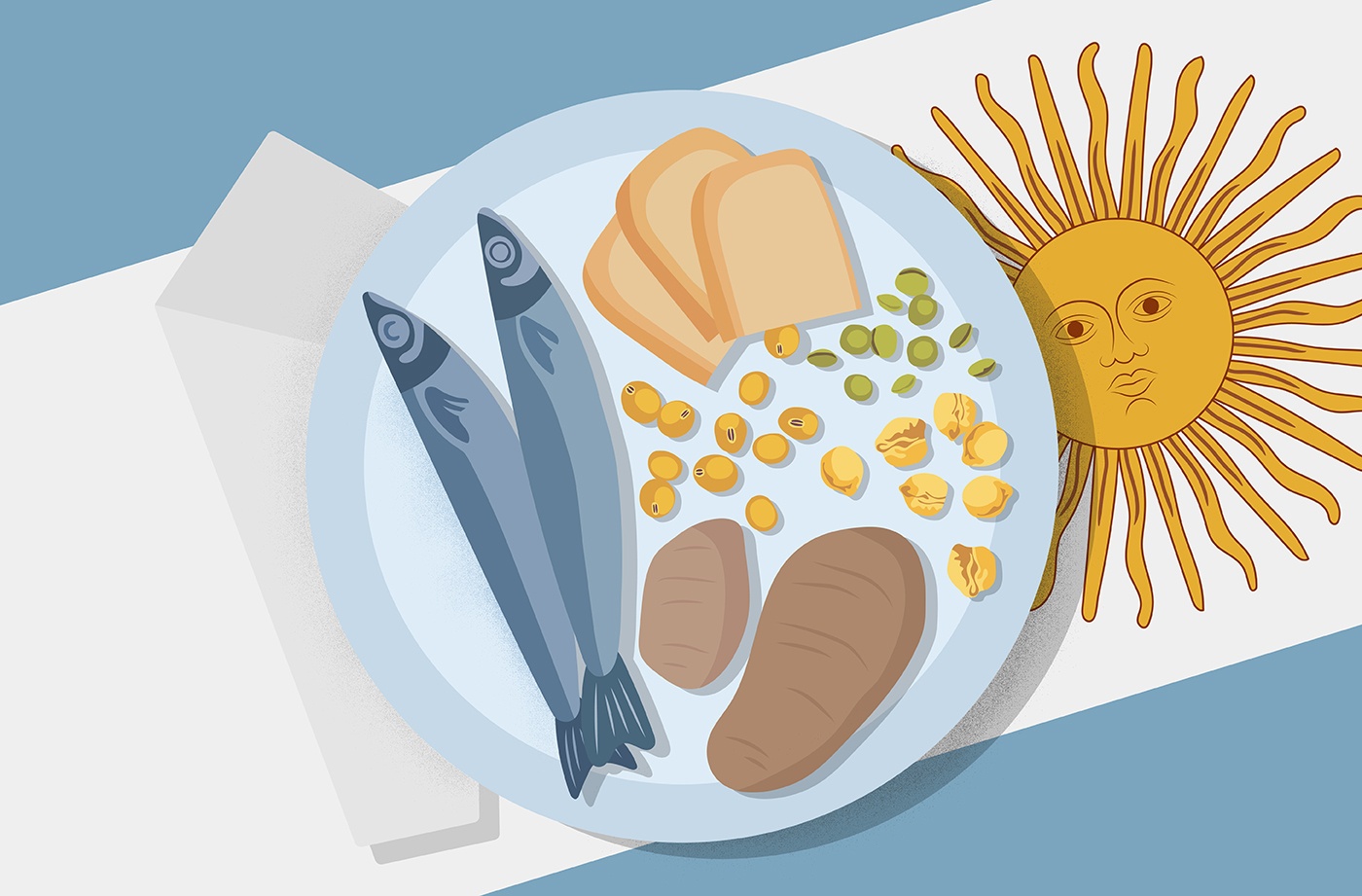
Argentina
Created by the Direction of Health Promotion and Control of Non-Transmissible Diseases, under the Ministry of Health and supported by the Ministry of Social Development and the Ministry of Agriculture, Argentina's nutritional guidelines are presented in the form of a circle divided into six food groups. The most real estate in the circle goes to fruits and vegetables. Legumes, cereals, potato, bread, and pasta are given the second biggest portion of the circle, followed by dairy, meat, and fish, and then more oils, dried fruit, and seeds get smaller portions. At the circle's center is water.
Unlike the other regions detailed here, the only specific guidelines Argentina has is to eat five to six servings of vegetables and fruit a day, and to drink eight glasses of water per day. The servings for the other five food groups aren't specified.

Australia
Australia is often heralded as a wellness haven and the country's nutritional guidelines, led by a committee of The National Health and Medical Research Council and leading nutrition experts, are far from complicated. Using a plate visual, five food groups are recommended in this order: grains; vegetables and legumes; fruit; lean meats, poultry, fish, eggs, tofu, nuts, and seeds; and reduced fat dairy products. Drinking plenty of water, using oils in moderation, and limiting alcohol and processed foods are also part of the guidelines. Below is a more detailed look at the daily recs:
- 5 servings of vegetables and legumes
- 2 servings of fruit
- 6 servings of grains
- 2.5 servings of lean meats, poultry, eggs, tofu, nuts, and seeds, 2.5 servings of dairy
Unlike other regions, Australia links vegetables and legumes together and puts fruit in its own category. You'll also notice that the biggest recommendations are for plant-based foods.
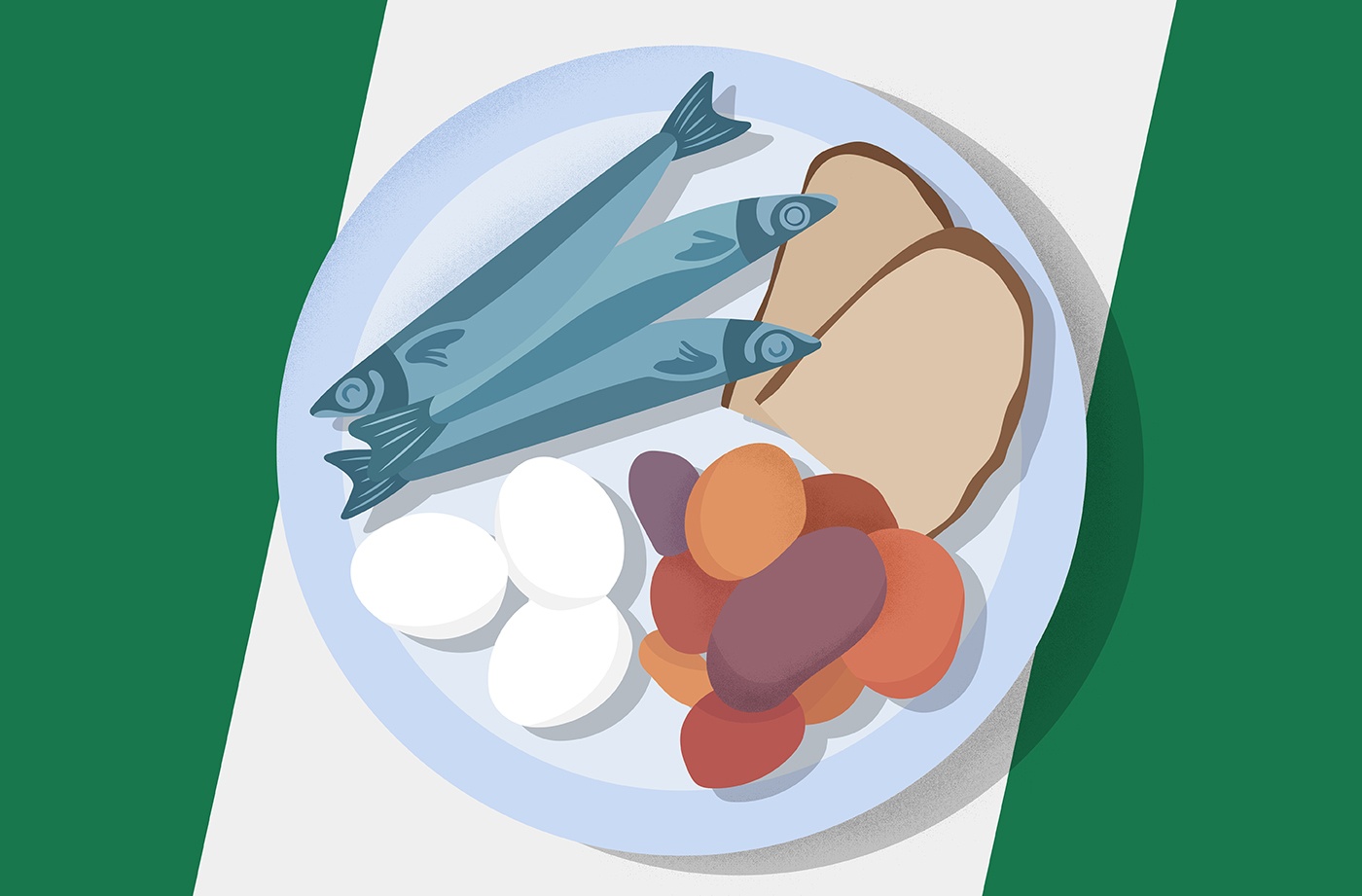
Nigeria
Developed by the Ministries of Health, Agriculture and Rural Development and Information, World Health Organization, Helen Keller International, International Institute of Tropical Agriculture, and pediatric and nutrition societies, Nigeria's nutritional guidelines include five food groups, taking the shape of a pyramid. At the bottom are bread, grains, and tubers, followed by vegetables and fruits. Both of the aforementioned food groups are recommended for every meal. The next level of the pyramid includes eggs, fish, meat, and dairy, recommended to eat in moderation. Citizens are told to keep oils and fats to a minimum. A glass of water is placed next to the pyramid to show the importance of hydration.
Similar to Argentina, the exact serving sizes for each food group are not specified in Nigeria's nutritional guidelines, though the handbook does say portions should vary based on an individual's age and activity level.
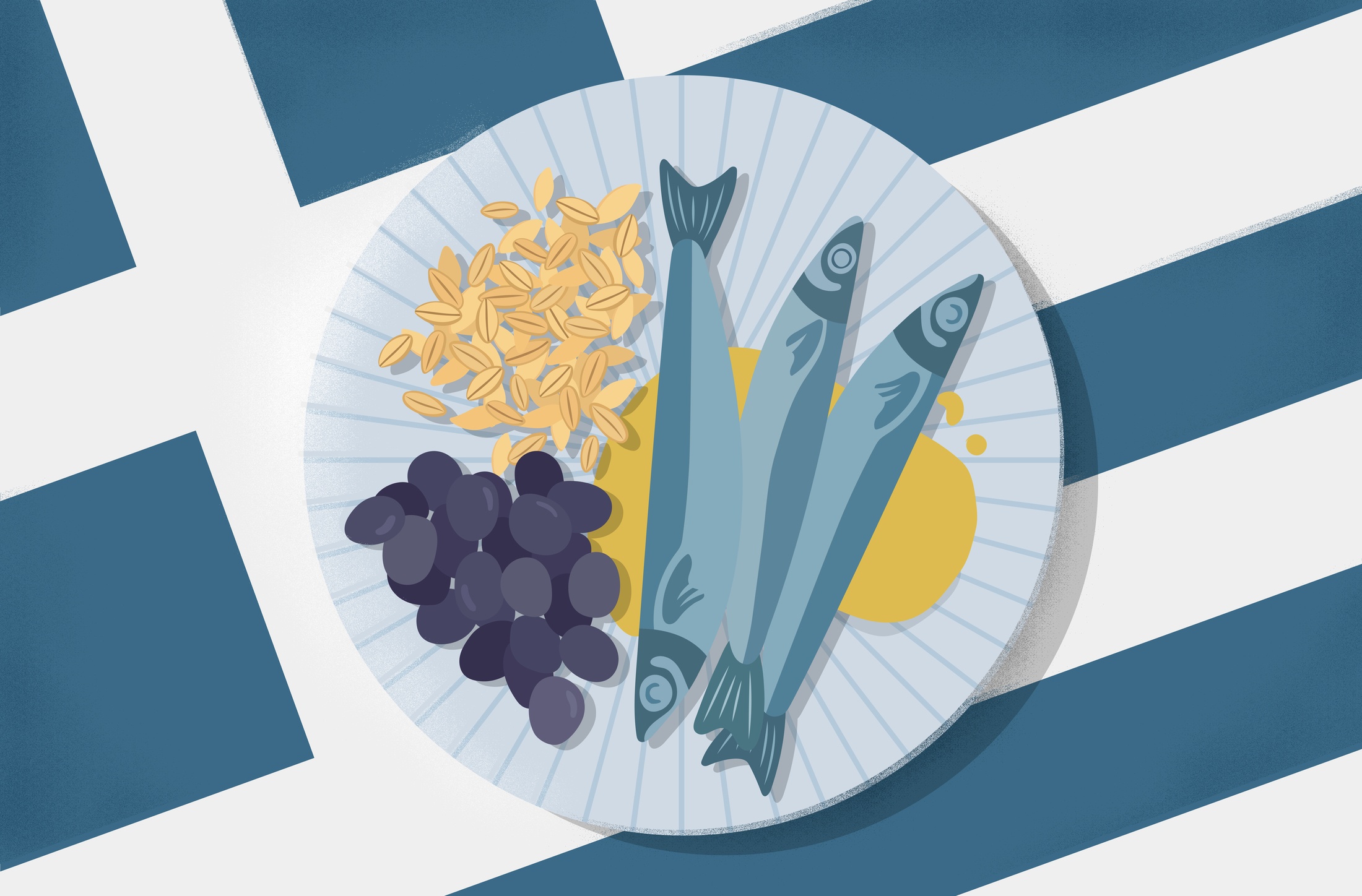
Greece
Welcome to the land of the Mediterranean diet, which is, in fact endorsed by the Greek government as the recommended way of eating. The guidelines take the form of the ever-popular pyramid to recommend what people should eat daily, weekly, and monthly. Daily, it suggests citizens eat non-refined cereal products (such as whole grain bread, whole grain pasta, and brown rice), vegetables and fruit (with more emphasis being placed on vegetables), olive oil (the healthy fat gets its own layer in the pyramid!), and dairy. Weekly, fish is advised, with poultry, olives, pulses (the edible seeds of legumes), and nuts, eggs, potatoes, and sweets also recommended weekly, but in smaller amounts. As for what should only be eaten monthly, the space is held for red meat. Wine and physical activity are both recommended in moderation. Check out the more detailed breakdown below:
Daily
- 8 servings of non-refined grains
- 6 servings of vegetables
- 3 servings of fruit
- Olive oil (no exact amount specified, but recommended as the main added lipid)
- 2 servings of dairy
Weekly
- 5 to 6 servings of fish
- 4 servings of poultry
- 3 to 4 servings of olives, pulses, and nuts
- 3 servings of potatoes
- 3 servings of eggs
- 3 servings of sweets
Monthly
- 4 servings of red meat
Pulses are given less importance in Greece than in India, but olive oil is so important it's called out specifically as an everyday food. And unlike in the U.S., red meat is considered so unhealthy in Greece that it's recommended to eat even less frequently than sweets.
No matter where you go, something all the dietary guidelines have in common is the importance of plant-based foods—especially veggies. Wherever you live, it seems, Michael Pollan's mantra—"Eat food. Not too much. Mostly plants."—rings true the world over.
While we're talking global eating habits, here's the verdict on if the French diet is truly healthy. Plus, what healthy snacking looks like in other countries.
Loading More Posts...